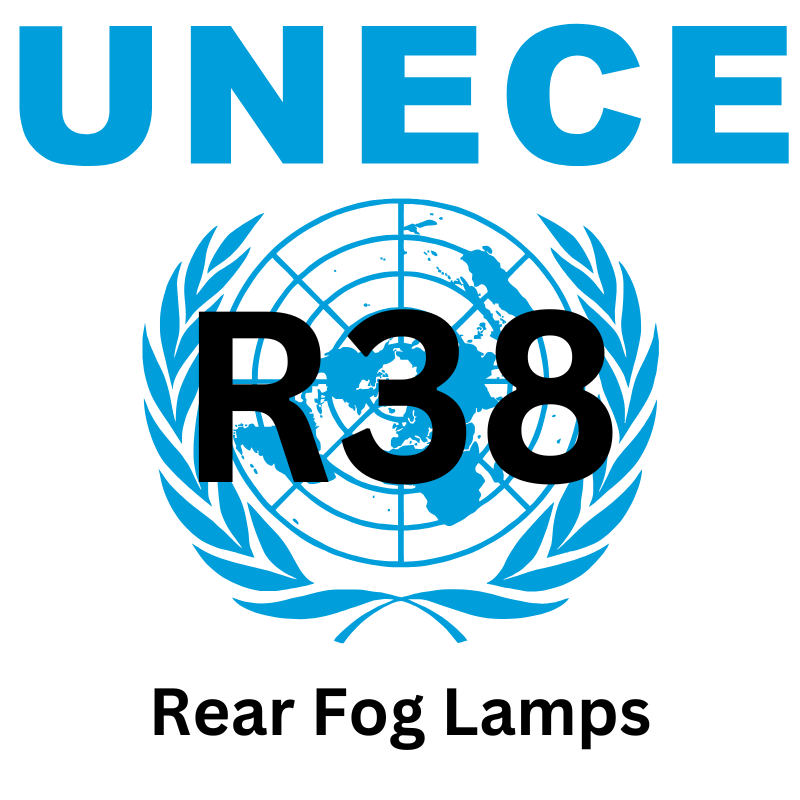Guide To: ECE R38 - Rear Fog Lamps
05 July 2018

Guide To: UNECE R38 - Rear Fog Lamps
UN ECE Regulation No. 38 provides the uniform provisions for the approval of rear fog lamps for motor vehicles and their trailers. Rear fog lamps are essential for enhancing vehicle visibility in adverse weather conditions such as fog, heavy rain, or snow, where regular rear lights may not provide enough visibility.
Scope of the Regulation
UN ECE R38 applies to:
- Rear fog lamps used in vehicles of categories L3, L4, L5, L7, M, N, O, and T, which include motorcycles, passenger cars, goods vehicles, trailers, and tractors.
Key Features of UN ECE R38
Design and Construction:
- Rear fog lamps are designed to provide a red signal of higher intensity than the rear position lamps to make vehicles more visible from behind in poor visibility conditions.
- The lamps must be able to withstand environmental conditions such as vibration and heat, ensuring they continue to function effectively during normal use.
Intensity of Light Emitted:
- The regulation specifies the light intensity requirements for rear fog lamps, ensuring that the lamps provide sufficient visibility without causing discomfort or glare to other drivers. The minimum intensity along specific axes must not be less than 150 candelas, and the maximum is 300 candelas for steady intensity or 840 candelas for variable intensity.
Testing Procedures:
- Rear fog lamps undergo rigorous photometric tests to measure their light intensity, distribution, and colour. These tests ensure that the lamps emit a consistent red light and meet the performance requirements across different angles.
- Additional tests, such as heat resistance tests, are conducted to verify that the lamps can operate under high temperatures without distorting or failing.
Variable Intensity Control:
- Some rear fog lamps may have variable intensity controls, which adjust the light output based on the surrounding conditions. This feature helps in maintaining appropriate visibility levels without exceeding the maximum allowable intensity.
Marking and Approval:
- Each approved rear fog lamp must bear a clear, legible approval mark, including the manufacturer's trade name or mark, and a unique approval number. These marks confirm the lamp’s compliance with the regulation.
Incorporation into UN ECE R148
The provisions of UN ECE R38 regarding rear fog lamps have been incorporated into UN ECE Regulation No. 148, which consolidates various light-signalling regulations under one framework. R148 simplifies the approval process by covering all signalling devices, including rear fog lamps, under a unified regulatory structure.
Conclusion
Rear fog lamps are crucial for ensuring vehicle visibility in poor weather conditions. Compliance with UN ECE R38 (now integrated into UN ECE R148) ensures that these lamps meet stringent international safety and performance standards. Manufacturers and vehicle operators must ensure that rear fog lamps conform to these regulations to maintain road safety and legal compliance.
Guides to ECE Regulation,E-Mark,ECE Regulation 38,Rear Fog Lamps,